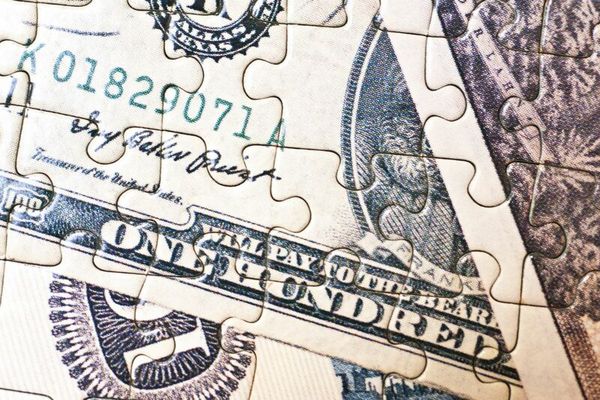
The dollar index (DXY00) on Tuesday fell by -0.19% and posted a 2-week low on a decline in T-note yields. Also, strength in the euro Tuesday undercut the dollar as strong Eurozone economic news pushed EUR/USD up to a 2-week high. The dollar extended its losses after Tuesday’s economic news showed that U.S. Jan leading indicators fell more than expected. Losses in the dollar on Tuesday were limited as weakness in stocks boosted some liquidity demand for the dollar.
U.S. Jan leading indicators fell -0.4% m/m, weaker than expectations of -0.3% m/m and the fifteenth consecutive month that leading indicators have declined.
The markets are discounting the chances for a -25 bp rate cut at 11% for the March 19-20 FOMC meeting and 40% for the following meeting on April 30-May 1.
EUR/USD (^EURUSD) on Tuesday rose by +0.28% and posted a 2-week high. The euro found support Tuesday on signs of economic strength in the Eurozone after January's new car registrations increased and December's construction output rose by the most in 10 months.
Eurozone Dec construction output rose +0.8% m/m, the largest increase in 10 months.
Eurozone Jan new car registrations rose +12.1% y/y to 852,000 units.
Swaps are pricing in the chances for a -25 bp rate cut by the ECB at 6% for its next meeting on March 7 and 45% for the following meeting on April 11.
USD/JPY (^USDJPY) on Tuesday fell by -0.07%. On Tuesday, the yen moved higher against the dollar due to a decline in T-note yields. The yen also found support from ideas that the Japanese government may intervene to support the yen after Finance Minister Suzuki said the government will continue to monitor the currency market with a high sense of urgency.
Swaps are pricing in the chances for a +10 bp rate increase by the BOJ at 32% for its next meeting on March 19 and 62% for the following meeting on April 26.
April gold (GCJ4) Tuesday closed +15.70 (+0.78%), and Mar silver (SIH24) closed -0.339 (-1.44%). Precious metals on Tuesday settled mixed. Tuesday’s fall in the dollar index to a 2-week low was bullish for metals prices. Also, lower global bond yields on Tuesday were supportive of precious metals. In addition, weakness in stocks boosted some safe-haven demand for precious metals.
On the negative side, precious metals have some negative carryover from last week after the stronger-than-expected U.S. Jan PPI and CPI reports dampened expectations for Fed rate cuts. Also, gold remains under pressure from the ongoing long liquidation of gold by funds after long gold holdings in ETFs fell to a 4-year low last Friday.
On the date of publication, Rich Asplund did not have (either directly or indirectly) positions in any of the securities mentioned in this article. All information and data in this article is solely for informational purposes. For more information please view the Barchart Disclosure Policy here.









